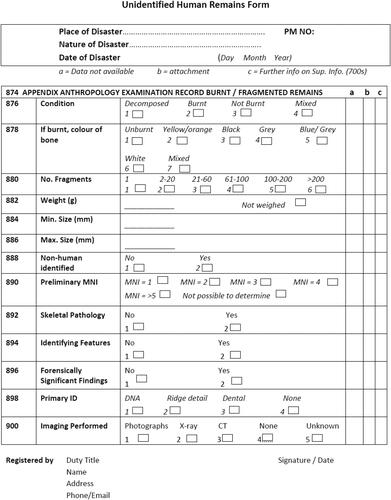Figures & data
Figure 1. Unidentified fragmentary remains form. Note this fragmentary remains form can be used at various stages during a disaster victim identification (DVI) operation. At the disaster site, the form can be used to document single or multiple fragments, providing a rapid reference for transportation and further examination. At the mortuary, the form can be used to document triage or during detailed examination of single fragments. Because the form can be used at various phases of the operation and can relate to single or multiple fragments, a rigorous numbering strategy should be used. This form is currently considered for inclusion in the International Criminal Police Organization (INTERPOL) DVI Guide, and follows the general layout of INTERPOL DVI forms. MNI: minimum number of individuals.

